The four basic elements needed by plants to survive are nitrogen, carbon, hydrogen, and oxygen. Excess, deficiency, or any imbalance may result in poor and improper nutrition. Nitrogen has proven to be a soil component that is relatively difficult to regulate. We have researched everything you need to know about reducing nitrogen in potted plants.
High nitrogen levels in your potted plants may be lessened by frequent watering or flushing, adding organic materials or mulch, and applying compost.
Inasmuch as nitrogen is one of the most vital elements in plant growth, sustenance, and nutrition, excessive amounts have immediate and toxic effects that compromise them. If you have this problem, allow us to help resolve the issue and more importantly, restore the health of your plants. Keep reading!
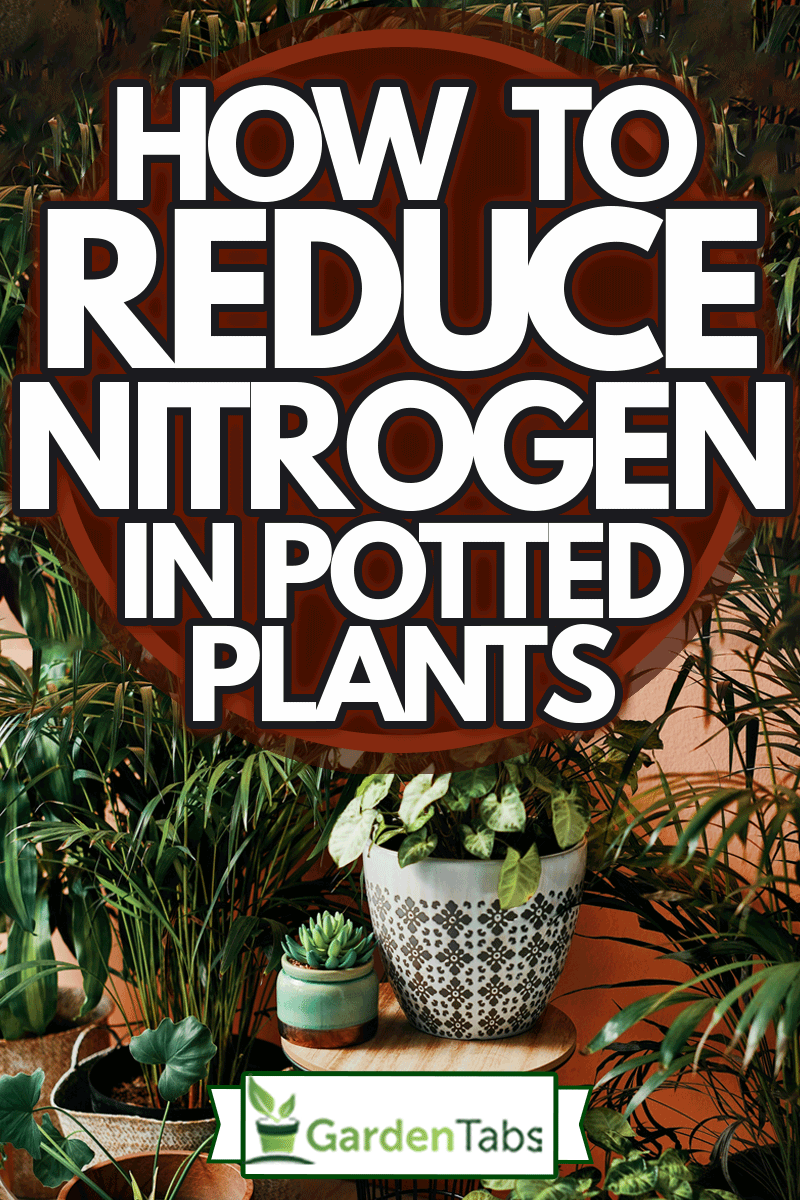
Plants And Nitrogen
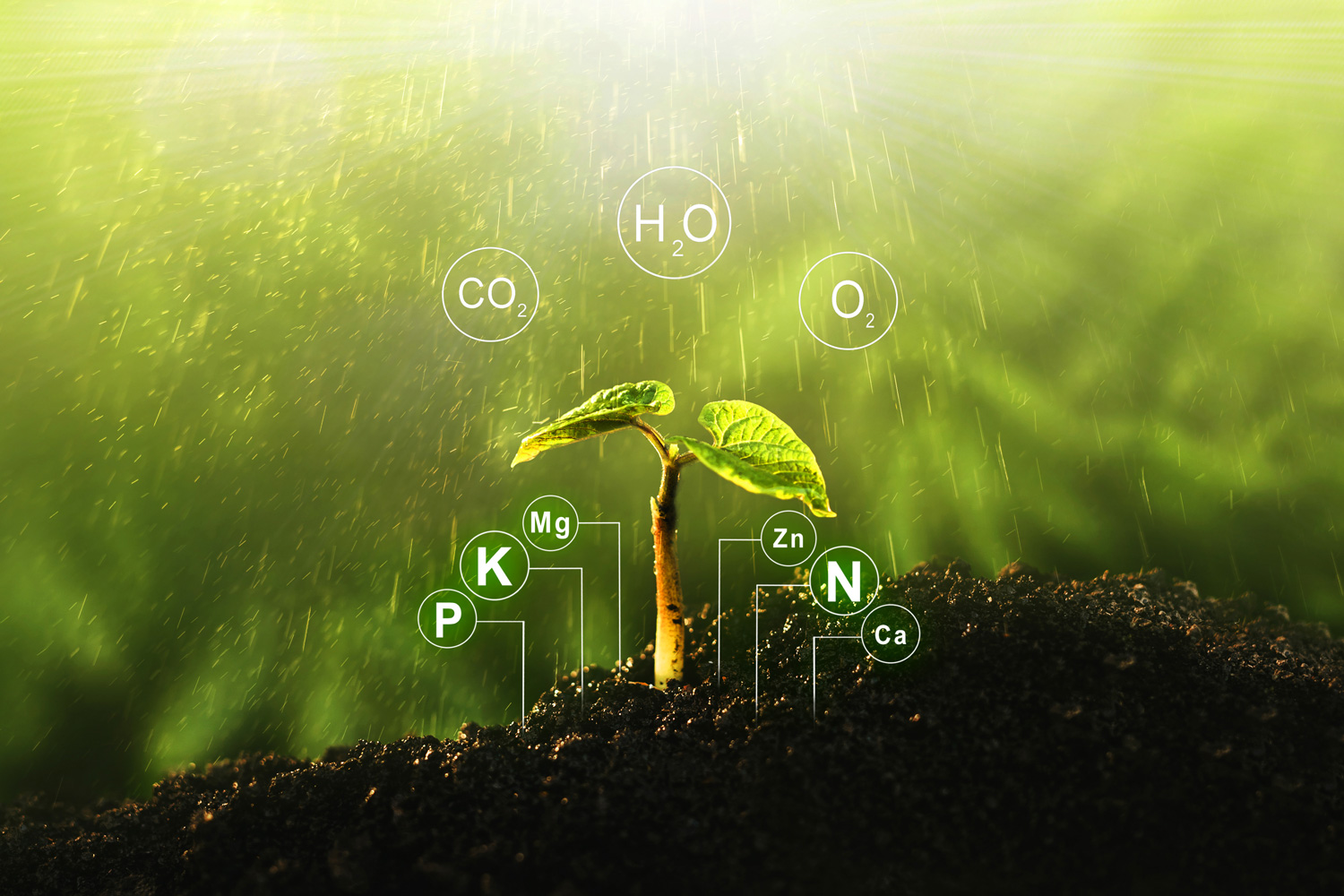
Nitrogen, chemical symbol N, is a colorless, odorless element that is the most abundant gas in the atmosphere. It is essential to all living things- humans, animals, and plants.
Plants contain 3 to 4 percent nitrogen in their tissues which is a relatively high concentration compared to other elements. This is because nitrogen is the major component of chlorophyll and amino acids. Chlorophyll is a compound by which plants use or synthesize sunlight to produce food; hence the term, photosynthesis.
Basically, plants use energy from the sun to convert carbon dioxide and water into sugar for nourishment. Amino acids are the building blocks of protein which are the structural units in plant cells.
Proteins multiply, grow and develop into the plant's roots, trunk, stems, leaves, flowers, and fruit. To simplify, nitrogen, together with carbon, hydrogen, and oxygen are the elements that make it possible for plants to grow and thrive.
While most protein formed from nitrogen is converted to plant tissue, a portion is utilized as enzymes. These are chemical compounds that make all processes and activities in the plant possible.
Enzymes regulate the amount of water and nutrients absorbed by the plants. They are also responsible for breaking down fertilizer and other soil materials and converting them into bioavailable forms.
Nitrogen Toxicity
A plant's life cycle begins from seed or germination, vegetative phase, and flowering stage and its nutritional requirements vary during development. Seeds only need sunlight and water since all nutrients are present within.
Once they germinate and enter the vegetative phase, they need a lot of nitrogen because this constitutes the plant's active growth stage and marks the onset of active photosynthesis.
Once the plants produce flowers, the nutrient needs are reduced. Many plant owners and enthusiasts are not aware of this change and continue administering the same amount of fertilizer, resulting in high concentrations of nitrogen or nitrogen toxicity.
Signs Of High Nitrogen Content
Too much nitrogen intake accumulates in the plant's tissue and results in toxicity. The following are the indicators:
Abnormal Dark Foliage
Initially, you may notice the leaves and foliage to assume a darker than usual hue. Many owners believe this to be a sign of a healthy plant. Nitrogen causes leaf growth with good and normal green color. Excessive darkening of the leaves is usually the first sign of nitrogen toxicity.
Leaf Discoloration
Another distinct sign of high nitrogen concentration is leaf discoloration. Yellow or brown pigments will appear on the edges of the leaf and gradually spread inwards. Eventually, the veins become affected and collapse, and the entire leaf falls off. Only a few leaves may be affected at first, but if the nitrogen level remains unchecked, the entire plant may be affected.
Curled Or Clawed Leaves
The tips of the leaves bend and curl into a claw-like appearance then turn brown or yellow and eventually fall off. Sometimes only certain leaves are affected. Clawing of the entire plant is more serious and needs to be corrected immediately. Depending on the species, the average time for the whole plant to deteriorate and die is between two weeks to a month.
Spotted Leaves
When a plant is subjected to abnormal conditions, it reacts by increasing water uptake to compensate. This increases the nitrogen level further and creates a vicious cycle.
Soon after, yellow or white spots begin to appear on the leaf surface and spread onto the surrounding foliage.
Slow Growth
High amounts of nitrogen present in the soil for prolonged periods cause it to become acidic. This condition results in poor root growth and propagation, thus preventing the entire plant from absorbing enough nutrients. You may notice that the plants take longer to grow and develop.
How Do You Reduce Nitrogen In Potted Plants?
There are several ways to normalize the amount of nitrogen in the soil.
Flushing
Flushing simply means frequent watering. This may be done daily for about a week or until you notice plant recovery which is most evident in the coloration of the foliage.
Water would naturally flush or drain out excessive amounts of nitrogen present in the soil. Adding coconut husk could prevent root rot since it loosens the soil and enhances drainage and moisture absorption.
Mulch
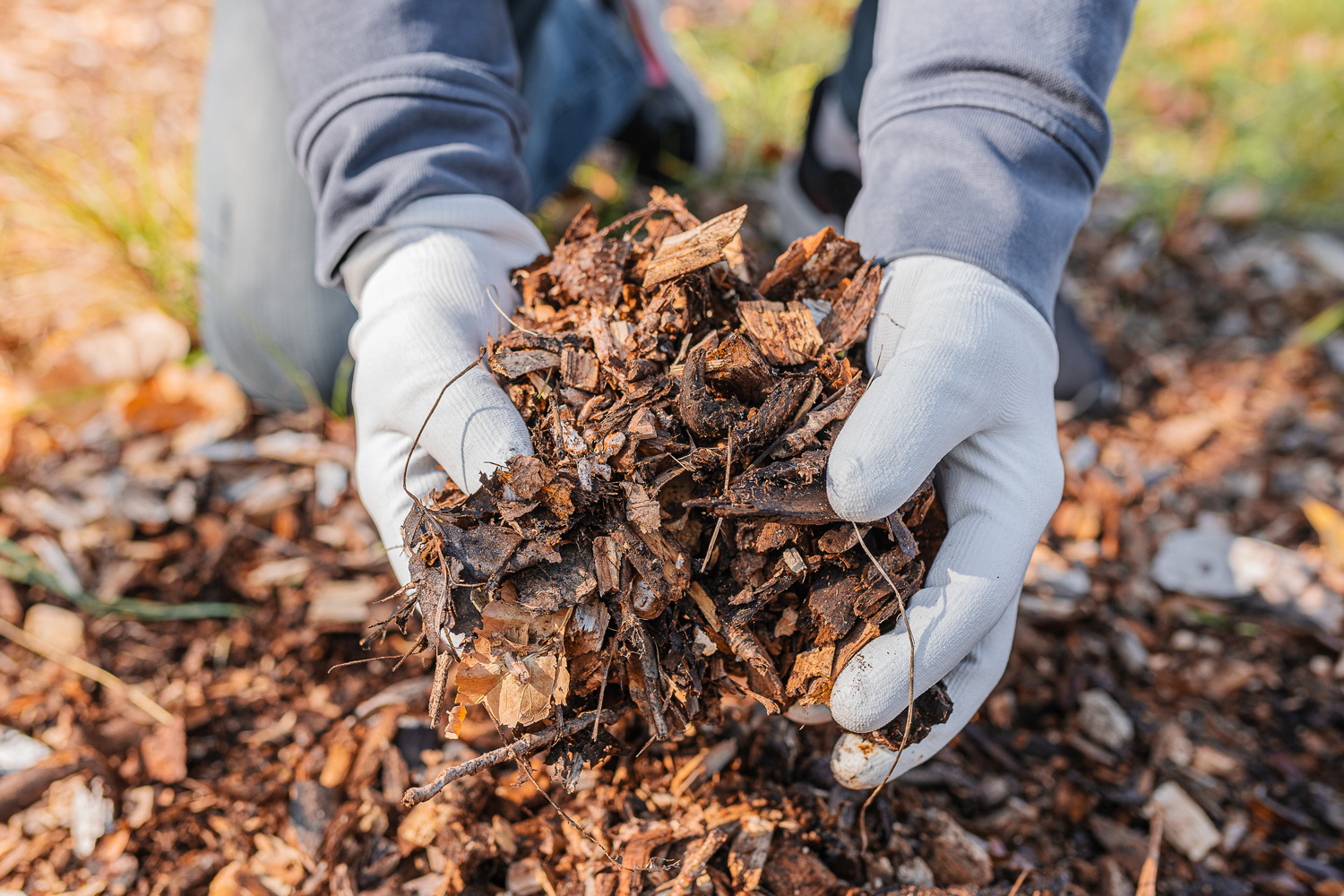
Mulch is a layer of material such as wood, pebbles, leaves, and the like that is applied to the surface of the soil. It functions mainly to retain moisture, provide nutrients, reduce weed growth, and enhance the presentation of the plant.
Organic mulch decays over time and the fungi and bacteria that decompose the material remove nitrogen from the soil. Wood byproducts such as sawdust, wood, and bark chips are excellent mediums to decrease nitrogen levels.
When exposed to the elements, wood rots due to moisture and parasites. The organisms that cause it to deteriorate absorb nitrogen and other elements from the soil for food and metabolic energy.
Compost
Compost is the partially decomposed remains of plants that supply essential nutrients. The process involves the conversion of grass, leaves, wood bark, twigs, and such into organic matter. The decomposition process of organic materials requires carbon as an energy source for microorganisms and nitrogen to produce protein.
The addition of compost to your potted plants results in nitrogen uptake and lessens its concentration in the soil. As mentioned, wood byproducts such as sawdust, wood bark, or trimmings are the ideal components of your compost mix.
Fertilizers: An Overview
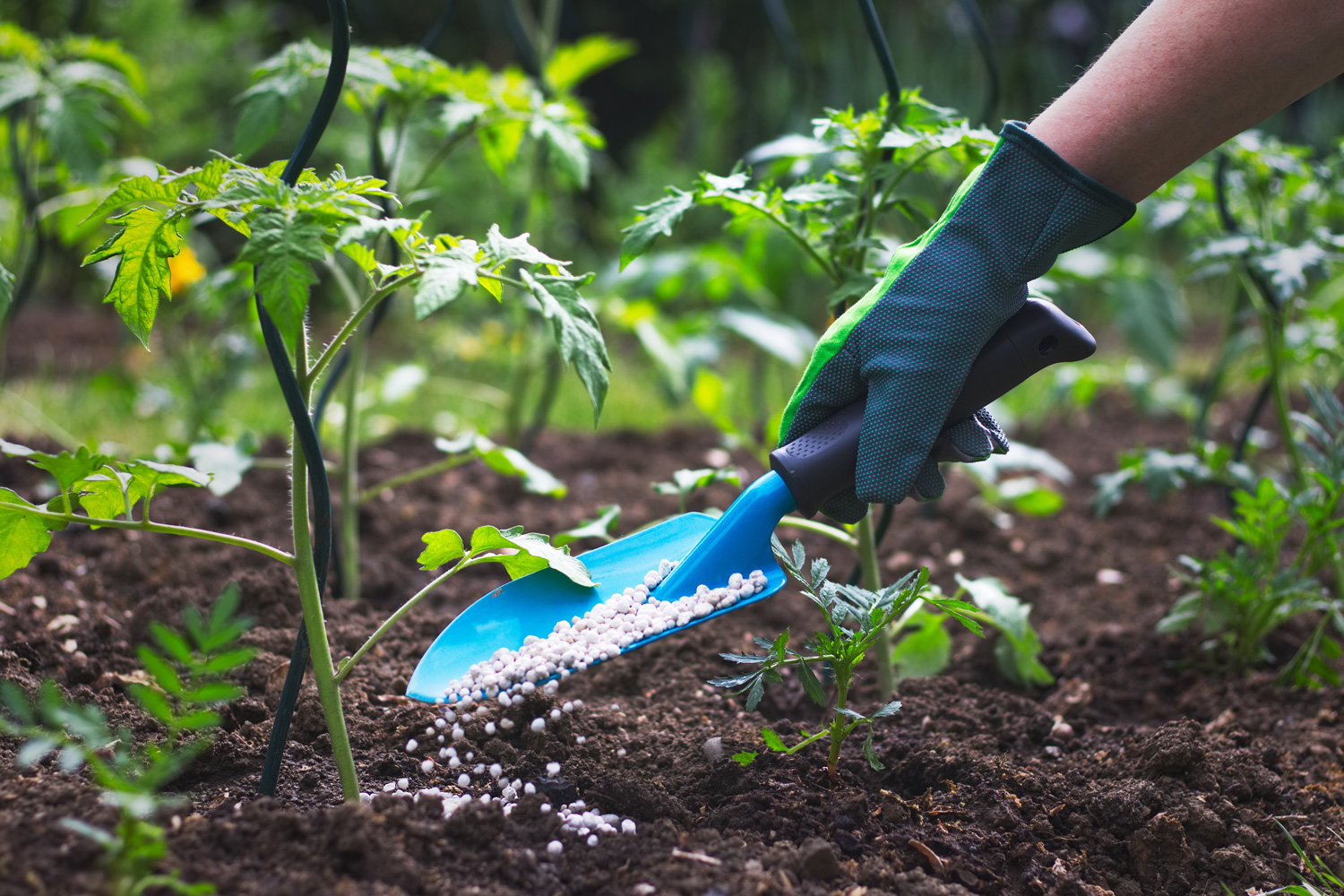
The main reason for increased levels of nitrogen in the soil is caused by the improper or excessive use of fertilizers.
Fertilizers are compounds used on plants and soil to supply the necessary nutrients for nourishment and growth. It helps improve soil fertility. Nitrogen, phosphorus, and potassium are the main components of fertilizers, and these three elements are substantial for plant development.
Since most plants cannot absorb pure nitrogen from the atmosphere, they get this nutrient from fertilizers. It is the core ingredient that helps in the development of plant cells which is essential in helping plants to grow. Any excess of this element will cause the leaves to wilt, and the vegetation to eventually die.
With this being said, a plant's growing period or vegetative stage is the most recommended timeframe where fertilizers have maximum effect on the vegetation because, at this stage, plants have an increased need for nitrogen. It is, however, advisable to lessen the application of this nourishment after the designated period so as to not harm the plant.
N-P-K
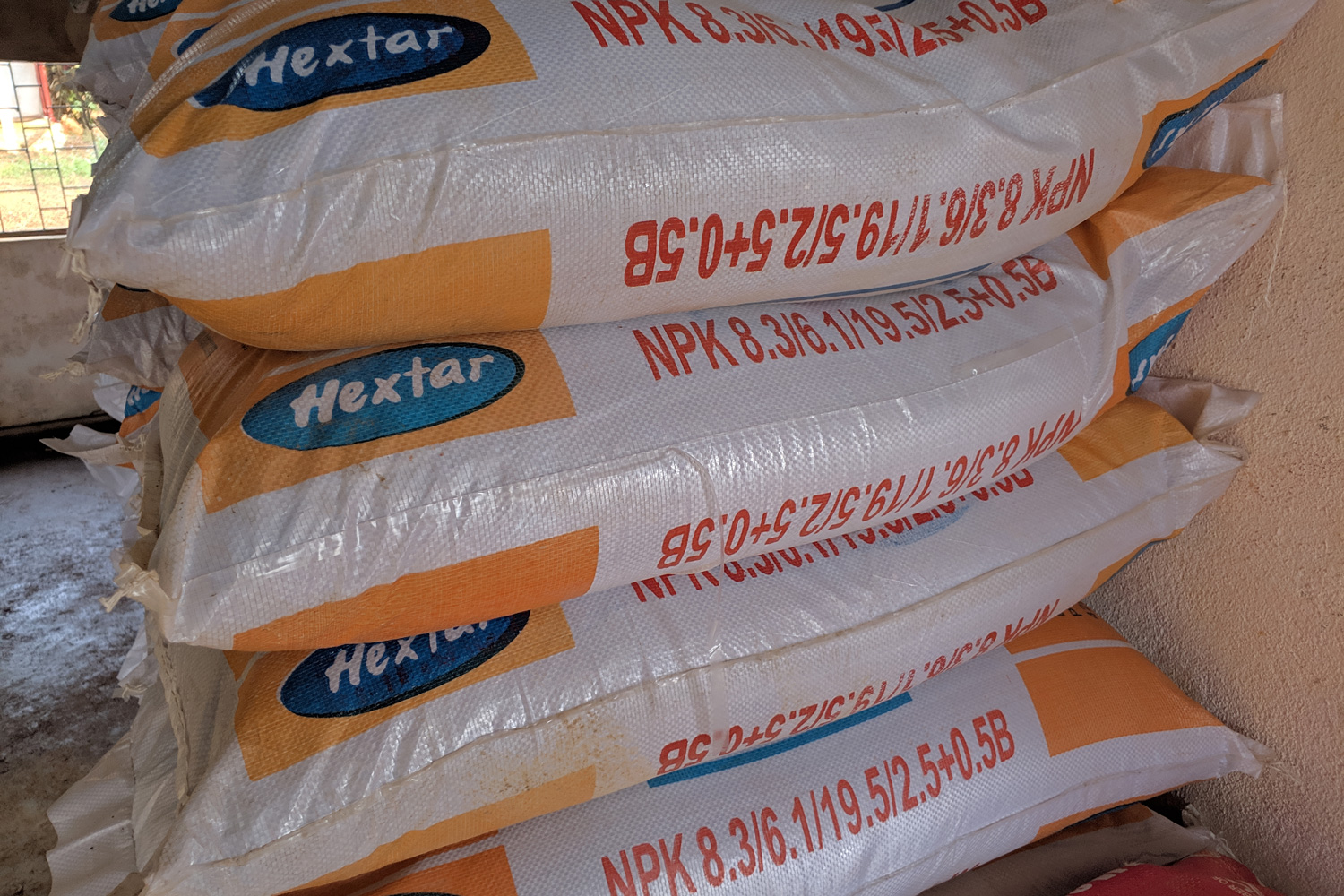
Nitrogen, phosphorus, and potassium (N-P-K) are the macronutrients every plant needs. This label, often accompanied by numbers, is often seen on every bag or pack of fertilizer. It determines the amount of N-P-K present in the fertilizer.
For instance, triple 14 or 14-14-14 contains 14 percent nitrogen, phosphorus, and potassium, respectively. These numbers vary depending on the amount of N-P-K your plant requires.
Two Main Classifications Of Fertilizers
Organic fertilizers consist of mined rock minerals and plant or animal materials such as manure, guano, ground bone, crushed or pulverized fish, rock, and wood. Inorganic fertilizers contain artificial minerals that plants need such as nitrogen, phosphorus, potassium, and other micronutrients.
These fertilizers can be found in two forms - granular and liquid. Granular is categorized as dry fertilizers that are a mixture of different raw materials that appear as pellets after being manufactured. When applied properly, it can dissolve after 24 hours.
Liquid fertilizers, as the name suggests, are liquid solutions that can be applied to plants as a form of food. You can either spray the substance onto the leaves of the plant or incorporate the liquid into the soil where the roots will absorb them.
Note: The number of nutrients in a fertilizer may vary depending on the degree of minerals your vegetation requires.
How Often To Apply Fertilizer?
First, you must determine the amount of fertilizer your plant needs. Different stages of growth have their own nourishment requirements. For example, during the germinating stage, seedlings need an ample amount of nitrogen and phosphorus.
Use a common liquid fertilizer at 1/4 regular strength. Do this once a week, slowly increasing the concentration of the substance as the seedlings continue to develop. Do not fertilize the seedlings before they have sprouted.
During the vegetative stage, plants need high amount of nitrogen, low percentage of phosphorus, and moderate potassium. A 9-4-5 triple combination is necessary to sustain plant growth. For potted plants, fertilizing once or twice a week is enough.
Remember to lessen the nitrogen intake of plants towards the last week of the vegetative stage or growing period. Normally, gardeners use 7-7-7 during this timeframe.
Established plants require twice as much phosphorus. In this scenario, 10-20-10 or 12-24-12 is the essential amount of fertilizer needed. Fertilize every 2 or 3 weeks depending on the form of fertilizer you are using.
In Closing
Excessive nitrogen is detrimental to your plant's health. Always remember to fertilize as needed, and only use the required amount of nourishment. We hope you have found this article helpful and informative.
Before you go, check out these related articles:
